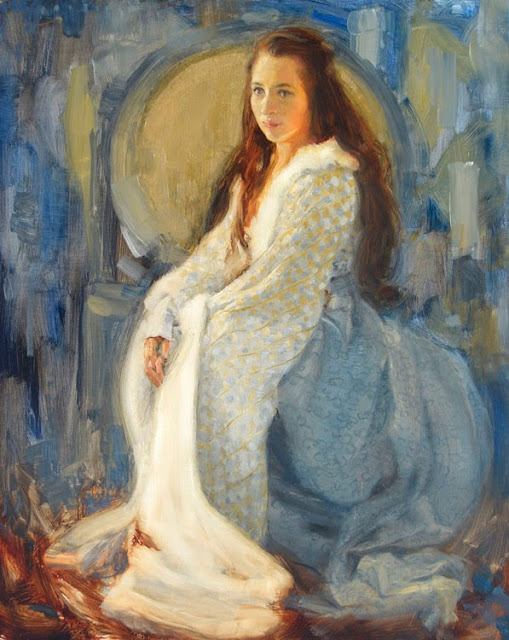The interesting challenge with Albus was that he is almost completely white. White, you say? Well what's wrong with painting white? The thing about white is it's, well white. White is almost always very high keyed. Meaning it's just so much brighter than everything else. As I paint in oil I'm lucky to get eight separate value steps. If I use all those values on white fur Albus is going to look pretty grey and dirty and his eyes are going to appear too light in relation to his face. And the real Albus has astonishingly bright blue eyes. So without the use of all my values to define form and shadow I have to use color.
Our mind's eye has been wired to use color to separate shadow and form. Using a combination of cool and warm colors in the same or similar values still allows me to separate light and shadow without eating up all my value range. Essentially, I can keep Albus white and his pupils dark.
Now with Albus and other white-furred animals (my family had a Dalmation for which this held true as well) the skin under their fur is often a different color. Albus' is pink. That means where the fur is thin, like above the nose, that pink will show through. So now I have another color introduced into the mix. It can be tricky. I use my painting experience as much as anything to know how to push values here and there, and sometimes take some guesses to have my painting reading how I perceive it should be.

















































